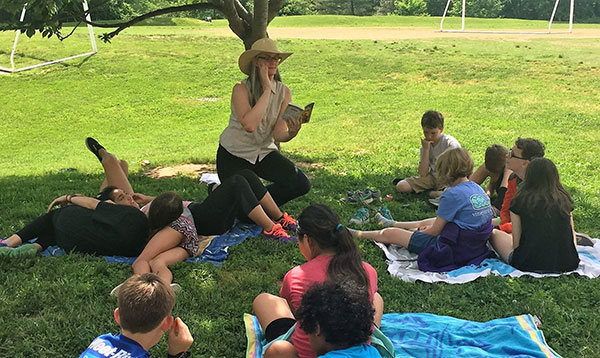Bringing guest readers into the classroom is a great activity any time of year. But the calendar is also full of opportunities for hosting special guests who read aloud. Many of these — including World Read Aloud Day , National African American Read-In , and NEA’s Read Across America — are coming up soon.
If you’ve been invited to be a guest reader, the best way to make the read aloud experience a great one for you and for your listeners is to be prepared!
Get help in making your reading selections. Ask for suggestions. If a teacher or librarian invited you to read with students, find out what they recommend you read. Ask for several titles to choose from or information about kids’ favorite authors. Here’s more guidance on choosing great read aloud titles.
Find out something about who is going to hear you read. Knowing whether the second-grade class consists predominately of students for whom English is a second language or that the fifth grader you’ll be reading to has an unusually short attention span should influence your selections when choosing what to read aloud. Learn more about strategies for including all students in a read aloud.
Choose a book that you like and will enjoy reading aloud. Before you share a book with a group, read it aloud to yourself — several times if possible. This practice helps prepare you for kids’ questions, gives you the ability to easily move the book around so that kids’ can see any illustrations, and lets you polish your act with appropriate pauses, silly voices, and fitting facial expressions. Make use of these hints on how to read aloud to a group.
Come prepared with more than one selection to read. Some books might not connect with your listeners. If so, don’t force the issue. It is okay to stop reading. Just acknowledge that the book isn’t going over well and try another title. The other reason to have plenty of books in your repertoire is equally important: you may be called for an encore!
Some of my favorite titles to read aloud include Interrupting Chicken by David Ezra Stein, Click Clack Moo: Cows that Type by Doreen Cronin, Abuela by Arthur Dorros, The Monster at the End of This Book by Jon Stone, and The Other Side by Jacqueline Woodson. I do often fall back on Dr. Seuss’s Green Eggs and Ham. It was the first book I learned to read, so I know it well. Since lots of kids know it well too, the last time I shared it with a group, I read it without looking at the pages at all, inviting kids to correct and help me when I missed or reversed a couplet.
Make sure both you and your audience are comfortable. Your audience isn’t going to be happy if they can’t see the pictures and neither will you. Dress for the possibility of sitting on the floor or in a child-size chair.

Give credit where credit is due. Before you start reading, be sure to point out the title, author and illustrator of the book you are about to read. This helps kids learn new authors and build their own list of favorites.
Help kids relate to the book. You selected the book for a reason. Share your thoughts about why you like the book and why you think they might find it interesting and enjoyable too.
Don’t read too fast. Or too long. You’ll lose your audience. Consider the listening skills of your audience when choosing your books to share. It’s okay to not read every word, but make the words you read and share count. A read aloud should include reader and listeners involved in lively, meaningful discussion and in asking and answering thoughtful questions.

